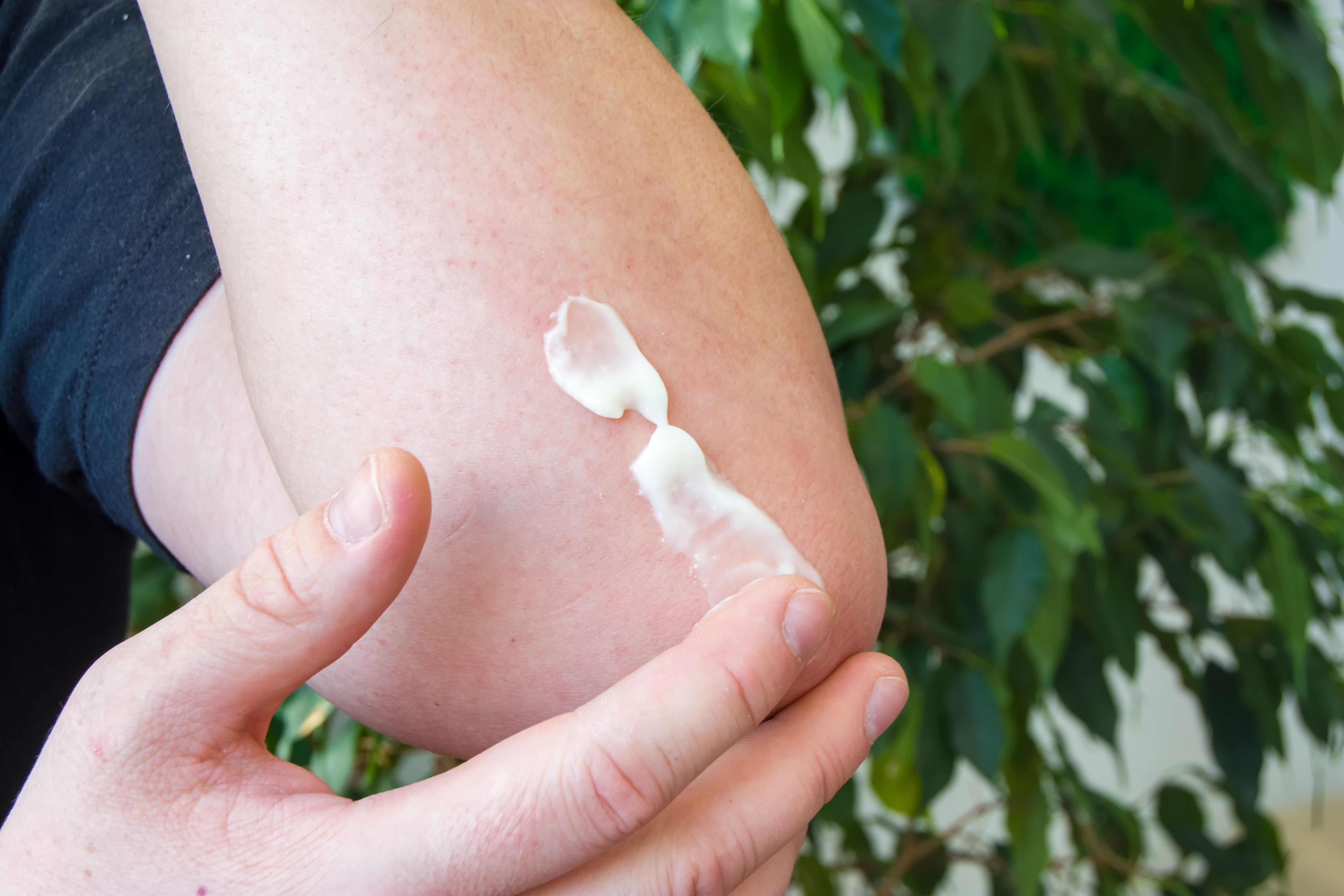- Acne
- Actinic Keratosis
- Aesthetics
- Alopecia
- Atopic Dermatitis
- Buy-and-Bill
- COVID-19
- Case-Based Roundtable
- Chronic Hand Eczema
- Chronic Spontaneous Urticaria
- Drug Watch
- Eczema
- General Dermatology
- Hidradenitis Suppurativa
- Melasma
- NP and PA
- Pediatric Dermatology
- Pigmentary Disorders
- Practice Management
- Precision Medicine and Biologics
- Prurigo Nodularis
- Psoriasis
- Psoriatic Arthritis
- Rare Disease
- Rosacea
- Skin Cancer
- Vitiligo
- Wound Care
Article
In Mouse Study, Topical Emollient Reduced Atopic Dermatitis-Like Lesions
Author(s):
Researchers said emollients markedly reduced lesions and other atopic dermatitis-related factors.
In mice, topical emollients proved to be effective in preventing the development of atopic dermatitis, as well as markedly reducing the severity of lesions and other related factors.
shidlovski/AdobeStock

In a recent murine study,1 researchers sought to determine the effects of emollients on several factors related to atopic dermatitis and atopic march due to a lack of existing research supporting the use of emollients to prevent atopic march.
Researchers acquired specific pathogen free female mice from the Beijing Vitalriver Laboratory Animal Technology Co. following study and laboratory animal welfare protocol approval. The mice underwent a 1-week acclimation period before being assigned to trial groups.
5 mice were assigned to a control group, 5 were assigned to an atopic dermatitis group, and 5 were assigned to an atopic dermatitis group to be treated with topical emollients before being shaved.
Upon shaving the mice, researchers induced atopic dermatitis in non-control group mice from day 1 to day 11 and day 18 to day 28 of the study. In order to do so, they applied 2 nmol of calcipotriol (MC903) solution dissolved in 40 μL of anhydrous ethanol, as well as 200 μg of ovalbumin (OVA) solution dissolved in 50 μL of PBS to the backs of the mice on a once-daily basis.
In the mice with induced atopic dermatitis set to be treated with topical emollients, researchers also applied 60 mg of a linoleic acid-ceramide rich emollient on a twice-daily basis following MC903 and OVA application.
Additionally, researchers fixed mouse skin and lung tissue in a 10% formalin solution and embedded them in paraffin in order to observe under a microscope and measure epidermal thickness. Furthermore, they conducted RNA sequencing and analysis, a KEGG enrichment analysis, a real-time fluorescent quantitative PCR, and a statistical analysis, as well as completing cytokine assays, wherein they measured serum TSLP, IL-4, and IgE levels.
At the conclusion of the 28-day study, researchers scored several factors, including gross appearance, erythema, desquamation, oedema, and scratch marks.
Researchers found that MC903 and OVA application significantly and markedly reduced the number of atopic dermatitis-like desquamation, erythema, oedema, scratch marks, and skin lesions. Compared to the untreated or control mice, researchers also noted a significant reduction is lesion severity. They also found that the topical emollient led to a reduction in epidermal thickening and inflammatory cell infiltration.
In regard to mRNA expression levels, researchers found that IL-4, IL-5, and IL-13 were increased in the skin. Emollient treatment also significantly lowered TSLP and IgE levels.
In mice in the atopic dermatitis group, researchers also observed that the topical emollients were capable of reversing transcriptomic alterations, particularly in interactions of chemokines and basophil activation. The study’s results also suggested a significant role of cutaneous function in developing atopic march.
“Topical emollient exhibits multiple benefits in a mouse model of AD, including inhibition of inflammation, mitigation of atopic march and modulation of neuroimmune function in the skin and the lungs,” study authors wrote. “Although benefits of topical emollients in AD have been well documented in clinical setting, whether atopic march can be prevented by topical emollient in humans remains to be explored.”
Reference
- Zhang J, Xu X, Wang X, et al. Topical emollient prevents the development of atopic dermatitis and atopic march in mice. Experimental Dermatol. 2023. doi:10.1111/exd.14806
Newsletter
Like what you’re reading? Subscribe to Dermatology Times for weekly updates on therapies, innovations, and real-world practice tips.











